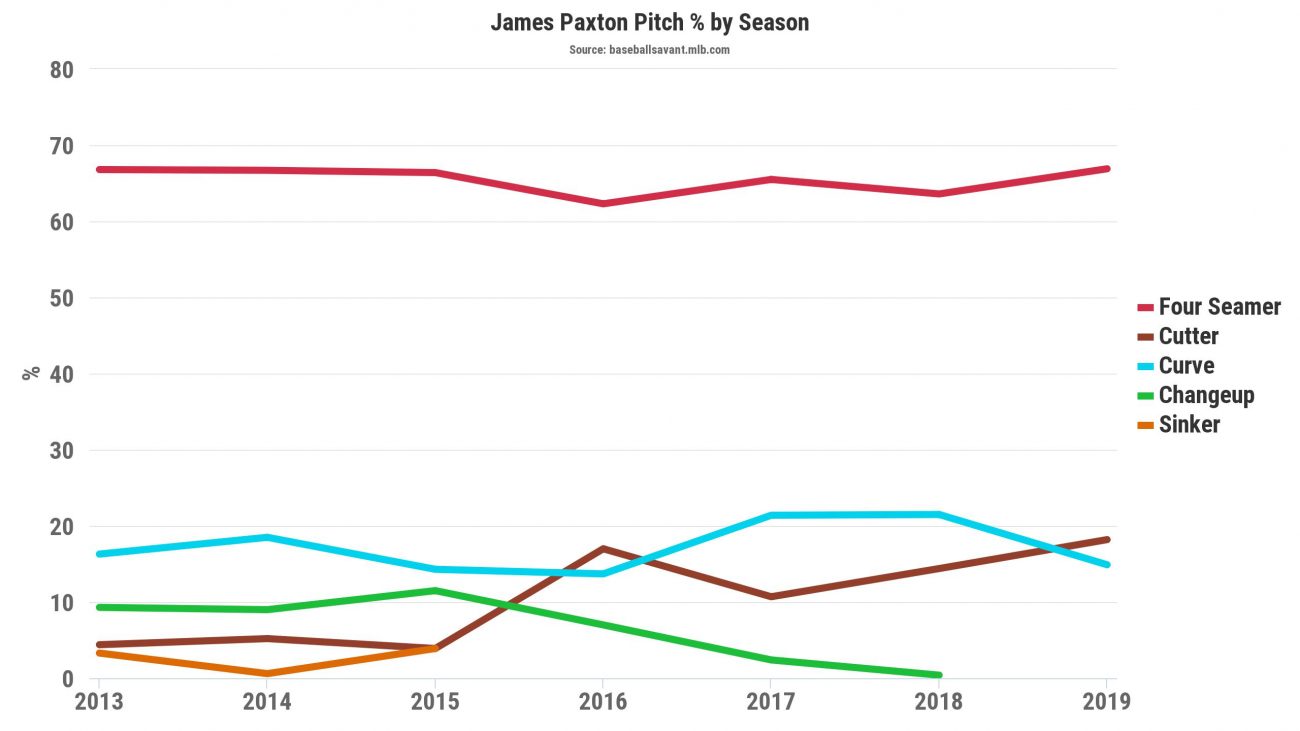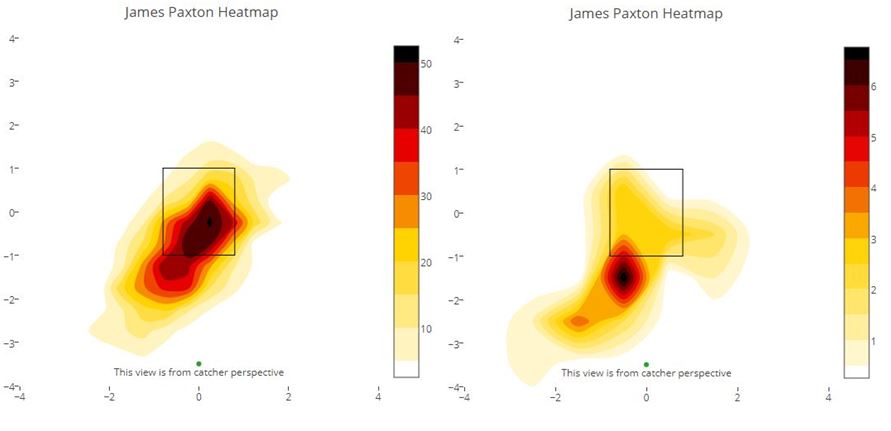In the past few years, the Yankees have shown a team philosophy of anti-fastballs. With pitchers like Masahiro Tanaka, the Yankees identify and look for pitchers who thrive with their off-speed pitches. Since 2017, the Yankees have thrown the lowest percentage of fastballs, with just over 53 percent of their pitches identified as any type of fastball.
Despite those tendencies, they have also acquired pitchers who throw a lot of fastballs. Last season, they traded for Lance Lynn and J.A. Happ, both of whom are in the top five in baseball in terms of fastball percentage. This offseason, they acquired another fastball reliant pitcher in James Paxton. Whenever a team gets a new player, they tend to make some adjustments they think will improve performance. For example, the Astros have become famous for helping Justin Verlander fix his slider release and increasing Gerrit Cole’s high four-seam fastball rate. Even though it has only been two starts, let’s take a look and see if we can find any notable changes in how Paxton is attacking hitters so far.
Here is a chart showing his pitch % for each season:
As you can see, there have not been any major changes. In fact, Paxton’s four-seam and cutter rate have both increased while his curveball rate has decreased. Of course it has only been two starts, so those subtle changes could just be noise. A more likely scenario is heavy fastball and cutter usage was the game plan against the woeful Orioles. Let’s also take a look at pitch locations to see if there are any changes there.
Here are Paxton’s fastball location heat maps for 2019 vs. 2017/2018.
The one on the left is for 2017/2018, and the one on the right is from this season. You can see how in the past, Paxton tended to throw his fastball up and close to the middle of the plate. So far this season, he is throwing his fastball lower and closer to the outside corner against righties. Paxton is known for having great swing and miss tendencies on his fastball, which usually leads to more pitches thrown up in the zone. It will be interesting to see if he continues using his fastball lower than in the past to try and keep the ball on the ground more.
Here are the heatmaps for Paxton’s curveball.
Once again, before this year is on the left, and this season is on the right. Now we start to see some big changes! Instead of attacking hitters in the zone with his curveball, Paxton is using it more out of the zone to get swings and misses. It is also possible that he is using his curveball more as an out pitch once he is ahead rather than as a get me over type early in the count. That theory may also help explain why he is throwing fewer curveballs than in the past.
Although I am glad that Paxton is throwing his fastball towards the corners more rather than in the middle of the plate, I would like to see him use the high fastball more because it has been an excellent pitch for him at getting swings and misses. And if the changes in curveball location are here to stay, utilizing the high fastball will also give batters a larger discrepancy between eye levels on his pitches. Changing eye level like that can only help lead to more confusion from hitters and more swings and misses. For the past few years, we have seen Luis Severino use a slider in the dirt to set up a fastball up in the zone, and I think Paxton could employ a similar pitch pattern to get strikeouts.
It is, of course, important to remember that 1. These data come from just two starts and 2. Those starts were against the Orioles. There is a huge amount of small sample noise and single game plan noise in these figures so far. It will be interesting to watch Paxton tonight against the Astros to see how he attacks a much better lineup. As the season goes on, we will check-in to see if Paxton has sustained these changes or made any new ones.
You can contact Rohan on Twitter @rohanarcot20







